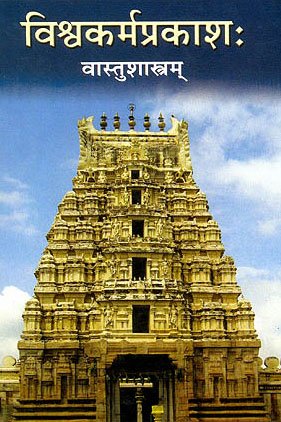Rajaveshman, Rājaveśma, Rājaveśman, Rajaveshma: 6 definitions
Introduction:
Rajaveshman means something in Hinduism, Sanskrit. If you want to know the exact meaning, history, etymology or English translation of this term then check out the descriptions on this page. Add your comment or reference to a book if you want to contribute to this summary article.
The Sanskrit terms Rājaveśma and Rājaveśman can be transliterated into English as Rajavesma or Rajaveshma or Rajavesman or Rajaveshman, using the IAST transliteration scheme (?).
In Hinduism
Purana and Itihasa (epic history)
Source: Cologne Digital Sanskrit Dictionaries: The Purana IndexRājaveśma (राजवेश्म).—Sacred to Lalitāpīṭha.*
- * Brahmāṇḍa-purāṇa IV. 44. 96.

The Purana (पुराण, purāṇas) refers to Sanskrit literature preserving ancient India’s vast cultural history, including historical legends, religious ceremonies, various arts and sciences. The eighteen mahapuranas total over 400,000 shlokas (metrical couplets) and date to at least several centuries BCE.
Vastushastra (architecture)
Source: archive.org: Bharatiya vastu-sastraRājaveśma (राजवेश्म) refers to the “residential quarters of the kings” (and their kinsmen), according to the Samarāṅgaṇasūtradhāra verse 15.1-8.— The opening sentence of the fifteenth chapter—‘rājaniveśa’, says, “that the planning of the Rājaveśma was a component part of the planning of a town”. Any town plan in ancient or medieval India must bestow sufficient attention to the Rājaveśma—the residential quarters of the kings and their kinsmen together with all the establishments of a king those days. This is what the Samarāṅgaṇasūtradhāra says at the very outset (cf. 15.1-8).
Note: It may be noted that the Rājaveśma of the Samarāṅgaṇasūtradhāra unlike that of Mānasāra does not admit of any classification in kind but degree only. The standard of measurement varies with its three varieties of the superior, intermediate and inferior quality. The first one of the one hundred eight hastas, the second of ninety hastas and the inferior one of seventy hastas, are deemed as fit—a lower measurement than this is prohibited.

Vastushastra (वास्तुशास्त्र, vāstuśāstra) refers to the ancient Indian science (shastra) of architecture (vastu), dealing with topics such architecture, sculpture, town-building, fort building and various other constructions. Vastu also deals with the philosophy of the architectural relation with the cosmic universe.
Languages of India and abroad
Sanskrit dictionary
Source: Cologne Digital Sanskrit Dictionaries: Cappeller Sanskrit-English DictionaryRājaveśman (राजवेश्मन्).—[neuter] a king’s abode, palace.
Source: Cologne Digital Sanskrit Dictionaries: Monier-Williams Sanskrit-English DictionaryRājaveśman (राजवेश्मन्):—[=rāja-veśman] [from rāja > rāj] n. a king’s palace, [Mahābhārata; Rāmāyaṇa; Kathāsaritsāgara]
[Sanskrit to German]
Sanskrit, also spelled संस्कृतम् (saṃskṛtam), is an ancient language of India commonly seen as the grandmother of the Indo-European language family (even English!). Closely allied with Prakrit and Pali, Sanskrit is more exhaustive in both grammar and terms and has the most extensive collection of literature in the world, greatly surpassing its sister-languages Greek and Latin.
See also (Relevant definitions)
Partial matches: Veshman, Raja.
Full-text: Kaksha.
Relevant text
Search found 5 books and stories containing Rajaveshman, Raja-veshman, Rāja-veśman, Raja-vesman, Rajaveshma, Rājaveśma, Rajavesma, Rājaveśman, Rajavesman; (plurals include: Rajaveshmans, veshmans, veśmans, vesmans, Rajaveshmas, Rājaveśmas, Rajavesmas, Rājaveśmans, Rajavesmans). You can also click to the full overview containing English textual excerpts. Below are direct links for the most relevant articles:
Samarangana-sutradhara (Summary) (by D. N. Shukla)
Lalitopakhyana (Lalita Mahatmya) (by G.V. Tagare)
Sanskrit sources of Kerala history (by Suma Parappattoli)
8. The Catakasandesa (composed in Thirumandhamkunnu) < [Chapter 4 - Traces of Historical Facts from Sandesha Kavyas and Short poems]
Vastu-shastra (4): Palace Architecture (by D. N. Shukla)
Vastu-shastra (1): Canons of Architecture (by D. N. Shukla)
(vi) Mayamata [Mayamatam] (Summary) < [Chapter 5 - Study of Hindu Science of Architecture]